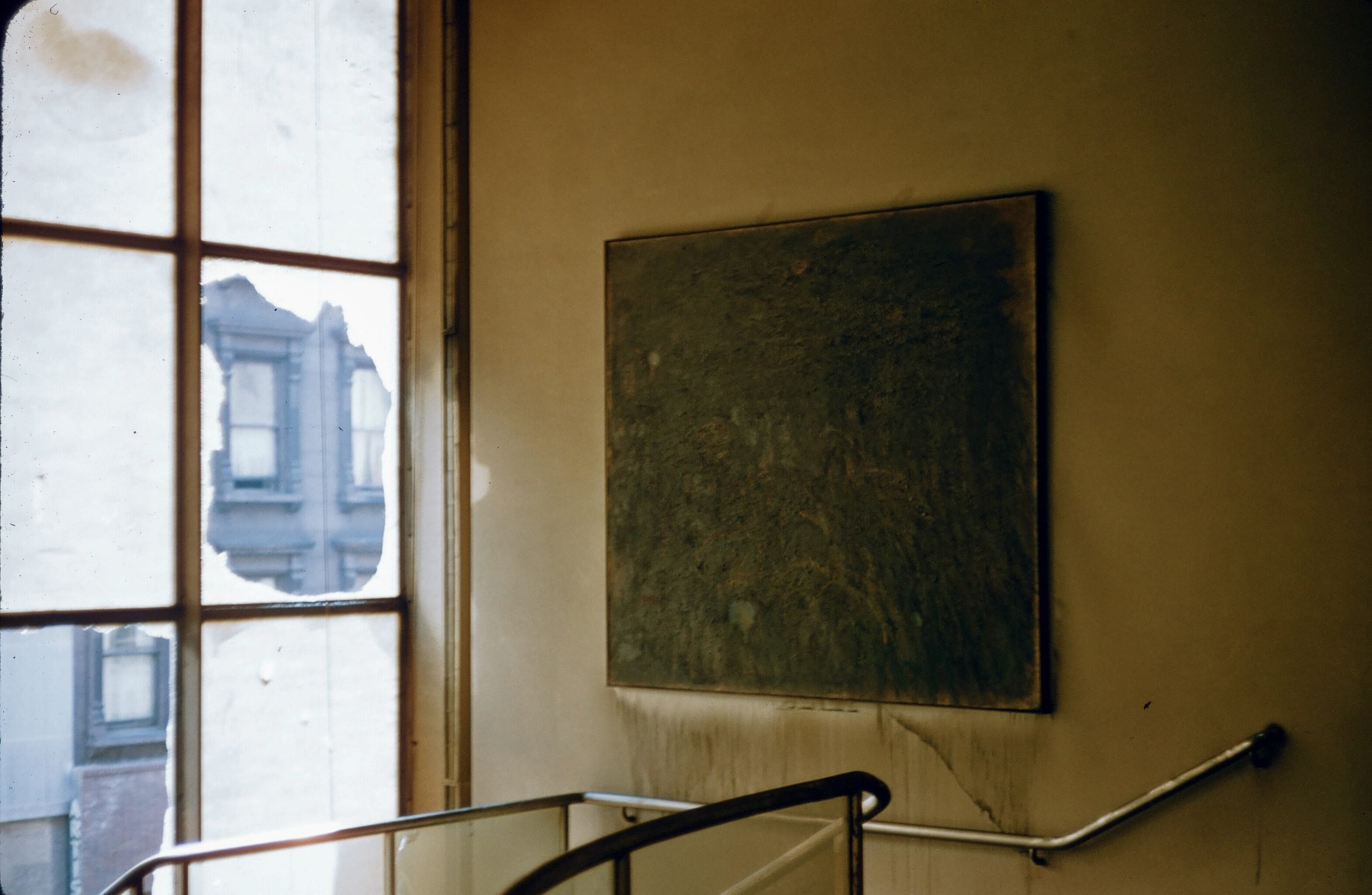
MoMA owns four Monets. Three are on view in the permanent collection galleries on the fifth floor, the largest of which is a sprawling, curved display from the French Impressionist’s Water Lilies series. But, the famous canvas wasn’t the museum’s first choice. In 1955, MoMA became the first U.S. institution to acquire one of Monet’s Water Lilies, a sprawling 18.5-foot-long example. It had been eight years since Abstract Expressionist Jackson Pollock hit the scene flinging paints, and Monet’s Impressionist work was a clear precursor. Alas, MoMA only had their Water Lillies until 1958, when an historic fire incinerated the artwork.
The reason the fire broke out was once again because MoMA was an early adopter—in this case of air conditioning. At noon on April 15, crews renovating the system took a smoke break during their lunch hour. A spark from one of their cigarettes fluttered into a nearby pile of sawdust, which went up in flames. The fire spread to paint cans, which ignited even more violently, filling the building with thick black smoke in minutes, endangering both people and paintings.
A firetruck on April 15, 1958 in front of the Museum of Modern Art. Photo: Ivan Dmitri/Michael Ochs Archives/Getty Images.
As the New York Times reported the next day, crowds of workers in Midtown gaped at the hellish scene unfolding: a three-alarm fire blackening and busting out the building’s sleek glass facade. Firefighters swarmed the scene, and the museum’s 500 visitors and staff were evacuated. Most escaped through adjoining buildings, like MoMA’s offices and the Whitney Museum of Art, but 200 had to wait on the roof garden for an hour before they could be rescued. One of the repairmen perished in the fire, and 28 firefighters and three employees sustained injuries. Publications recounted the chaos, despair, and eventual relief at the scene with a flourish.
Upon reaching the street, staff members including board chairman Nelson Rockefeller caught their breath and returned inside to save as many of the museum’s 2,000 artworks on view as they could. Handing the pieces down a bucket brigade–style chain lining a stairwell, they rescued a whopping $4 million in art ($43 million today) while firefighters spent an hour dousing the blaze. The estimated damages amounted to under $300,000 ($3.2 million today).
Firemen assess the damage after the fire at MoMA, 1958. Photo: Ivan Dmitri/Michael Ochs Archives/Getty Images.
MoMA’s building recovered easily, but the smoke and hoses damaged half a dozen artworks, including Umberto Boccioni’s The City Rises (1910), Larry Rivers’s Washington Crossing the Delaware (1953), Candido Portinari’s 1939 World’s Fair mural Festival of St. John’s Eve, and Pawel Tchelitchew’s Hide-and-Seek (1940-42)—one of the museum’s most popular offerings, according to Time—along with a seven-foot rendition from Monet’s Water Lilies that came out looking like a “burnt marshmallow.” Monet’s larger Water Lilies also proved unsalvageable, all but crushed by firefighters who had to force their way in to the gallery put out the blaze. Jean Volkner, who studied under the nation’s leading conservators, managed to restore the smoke-ridden facade of Jackson Pollock’s Number 1A (1948).
Meanwhile, Georges Seurat’s A Sunday Afternoon on the Island of La Grande Jatte (1884–86) was at MoMA for its only-ever loan from the Art Institute of Chicago. Eleven people assisted in evacuating the 500-pound display, which was reinstalled in the New York museum on May`1—then returned home to Chicago under armed guard two weeks later.
Monet’s Water Lilies at MoMA, 2019. (Photo by Kena Betancur/VIEWpress)
In the end, MoMA paired their $100,000 insurance payout from the fire with funds from the Mrs. Simon Guggenheim fund to buy another Monet — this time the triptych we know today — that the New York Times swore was even better. MoMA heeded the Fire Commissioner’s admonitions and re-built the gallery walls from cinder blocks rather than wood, and Volkmer went on to found the museum’s first in-house conservation department. The oft-forgotten fire’s mark still remains today.
What’s the deal with Leonardo’s harpsichord-viola? Why were Impressionists obsessed with the color purple? Art Bites brings you a surprising fact, lesser-known anecdote, or curious event from art history.